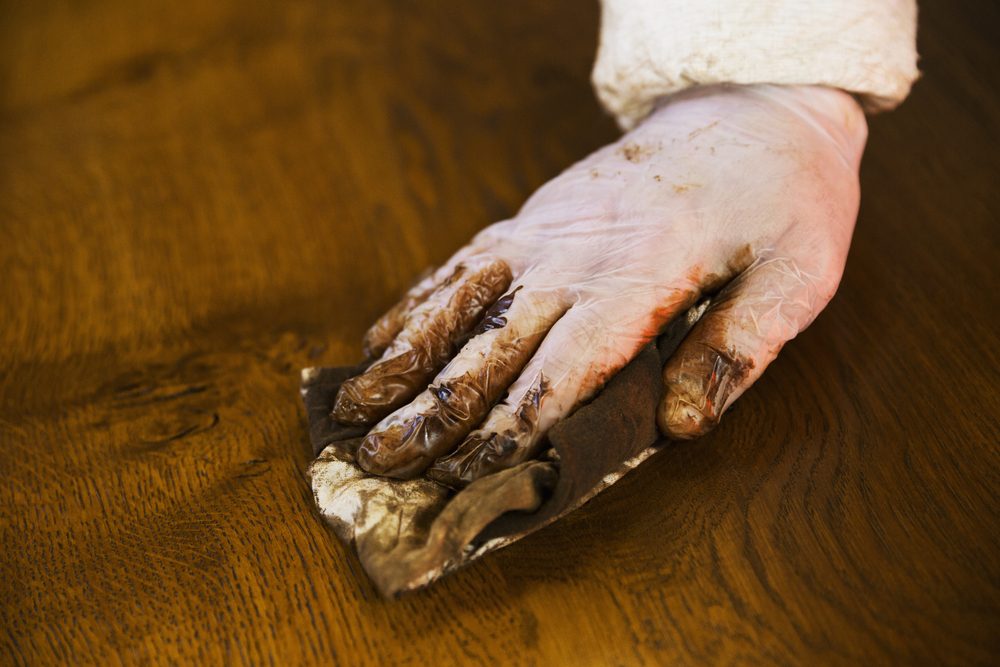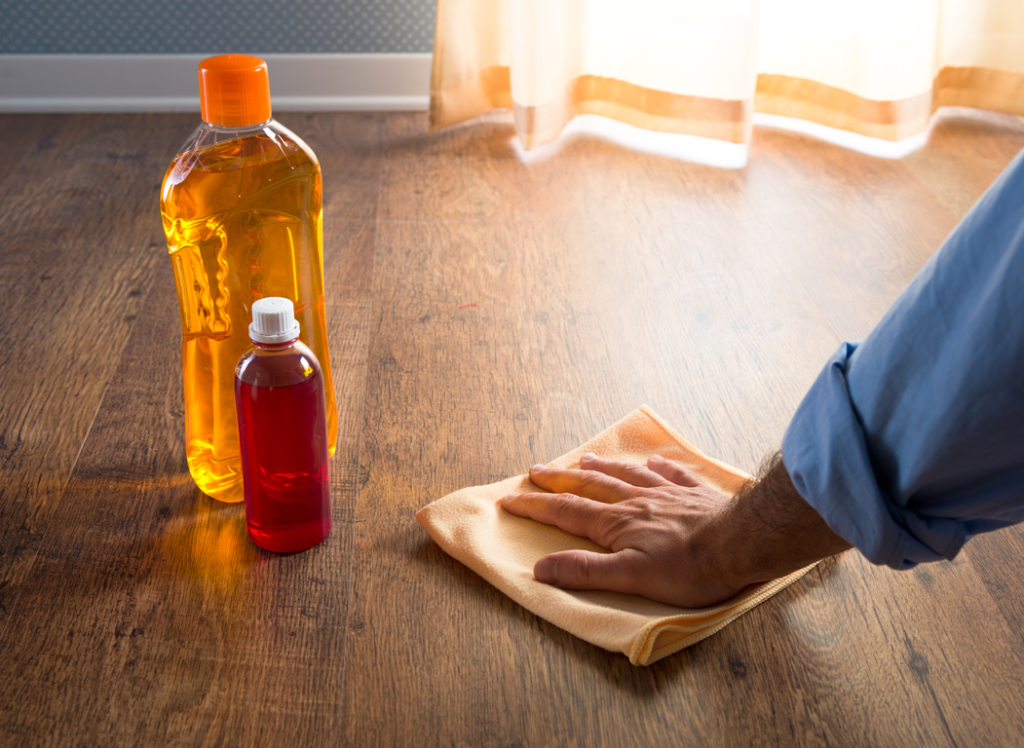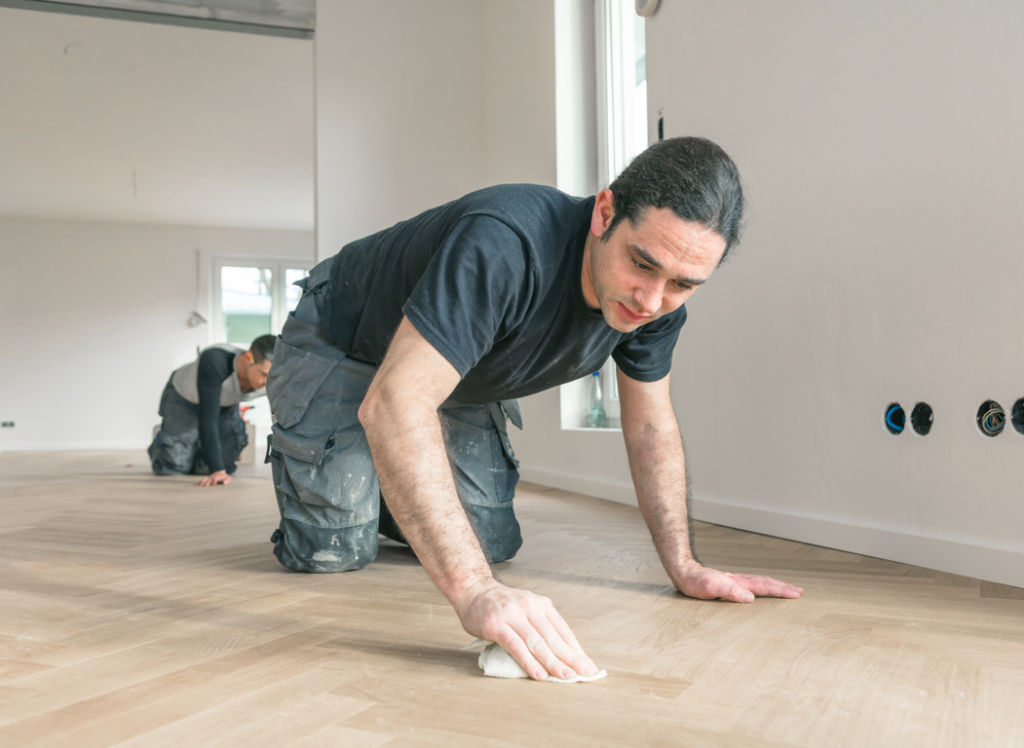
Wood flooring has become increasingly popular in recent years. You have a wide variety of flooring options to create the home of your dream. Moreover, you can use various wax finishes to get the look you want.
You can finish a wooden floor with a variety of different products. Follow this Guide to All the Different Wood Finishes for more.
Wax finishes on wood can give your home a modern or traditional feel and fit perfectly with many different designs. However, there are both advantages and disadvantages associated with wax finishes on wood flooring. So, we will take a look at both.
Early wax finishes came in paste form. They could be applied by rubbing them hard into the floor and polishing them until you achieve a shiny surface. You can still use paste floor wax these days, but more options are available in 2022.
What are wax finishes?
Wax finishes have been used for many decades. They could provide you with an elegant and sophisticated wooden floor. Traditionally, they were made of organic ingredients, such as beeswax, carnauba wax, linseed or other plant-based oils.
However, we’re in 2022, and many synthetic substitutes are now on the market. The liquid types of synthetic wax finishes are faster and easier to work with. So, they’re getting popular. Nevertheless, they’re not flooring wax. They are primarily acrylic-based polymers.

So, now, let’s look at the pros and cons of using timber wax on flooring.
Advantages of using wax finishes on wood flooring
Although polyurethane has been considered a wax finish for years now, we will focus mainly on traditional wax here. One of the best things about timber wax is its low, discreet shine, giving your floors a more relaxed and elegant look than polyurethane-based wax. So, let’s look at the main pros of wax finishes!
1. Enhanced protection
Wax finishes can give your floor a longer lifespan, protecting against the general wear and tear of heavy foot traffic. Whether in a commercial or domestic setting, a wooden floor will be subjected to a fair amount of foot traffic over the years. Adding a coat of beeswax or other timber finish can protect the wood and avoid any lasting damage.
A coat of timber wax will also hold up well against scratches or blows. Moreover, beeswax or any other wax finish will waterproof the wood. This is useful against spills or water residue associated with heavy foot traffic. Waterproofing a wooden surface can prevent rot or warping.

All in all, wax penetrates deep into the layers of the wood, which means it gives a higher level of protection and keeps the floor in excellent condition for longer.
2. Elegant appearance
The wax protects the wood’s natural appearance and highlights the pigmentation. So, a coat of wax can greatly enhance the appearance of a wood floor. If maintained regularly, the floor can look fresh and clean for years to come.
3. Environmentally friendly
Using a beeswax finish or timber wax is a more natural way of finishing a floor. Other finishes contain chemicals that may be harmful to the environment. These chemicals can also emit toxic fumes, which aren’t only bad for the environment, they can also be detrimental to the health of individuals or pets living in the building.
Wax wood finishes will still emit an odour, but this isn’t as long-lasting, and the smell is much more natural than that from a timber finish laden with chemicals.
4. Wax finishes are easy to apply
Wax finishes are fast and easy to apply. This is particularly important for commercial installations where adding new flooring can affect business operations.
Disadvantages of wax finishes on wood
It’s easy to see why wax is desirable when installing a new wood floor. However, some disadvantages of wax should be taken into account when deciding on finishing options.
1. Difficult to remove
Although wax is easy to apply to a floor, it is pretty difficult to remove. This isn’t always a bad thing as most people do not need to remove the finish on their floor.
However, when it comes to refinishing, the “old” wax might pose a problem.
2. Natural wax finishes are not as persistent as Polyurethane
Even the best wood wax isn’t as durable as a polyurethane finish. Although it is more persistent, polyurethane does not help create the same elegant sheen as wax finishes.
More than that, polyurethane can be easily chipped, which rarely happens with wax.
3. Wax is not suitable for all types of flooring
Wax can be a great finishing option for genuine wood floors and even concrete, but there are some materials that wax finishes aren’t suitable for, like vinyl flooring.
4. You need to apply it by hand

Solid paste wax needs to be applied by hand. It is simple, but it requires some considerable physical effort. One will need to be comfortable getting on their hands and knees and manually applying wax to the floor with an old rag.
So, What Should You Choose? Wax or no Wax?
As with everything, there are pros and cons to weigh up when deciding on a flooring finish. The best option is usually dependent on many factors. Therefore, it’s up to you to decide which finishing option suits your needs in 2022.
If you’ve settled for wax, there are two options on the table – liquid and solid paste wax. Both options come with their advantages and disadvantages. Paste wax generally contains fewer solvents and doesn’t require as many coats, but it must be applied by hand. Liquid wax is often more solvent-heavy but can be applied using a mop.
| Mon-Fri | 8:00AM – 5:00PM |
| Saturday | 10:00AM – 4:00PM |
| Sunday | 11:00AM – 3:00PM |





.svg)
.svg)